
Alfonso I, called the Battler or the Warrior, was King of Aragon and Navarre from 1104 until his death in 1134. He was the second son of King Sancho Ramírez and successor of his brother Peter I. With his marriage to Urraca, queen regnant of Castile, León and Galicia, in 1109, he began to use, with some justification, the grandiose title Emperor of Spain, formerly employed by his father-in-law, Alfonso VI. Alfonso the Battler earned his sobriquet in the Reconquista. He won his greatest military successes in the middle Ebro, where he conquered Zaragoza in 1118 and took Ejea, Tudela, Calatayud, Borja, Tarazona, Daroca, and Monreal del Campo. He died in September 1134 after an unsuccessful battle with the Muslims at the Battle of Fraga.

Alfonso II, called the Chaste or the Troubadour, was the King of Aragon and, as Alfons I, the Count of Barcelona from 1164 until his death. The eldest son of Count Ramon Berenguer IV of Barcelona and Queen Petronilla of Aragon, he was the first King of Aragon who was also Count of Barcelona. He was also Count of Provence, which he secured from Douce II and her would-be father-in-law Raymond V, Count of Toulouse, from 1166 until 1173, when he ceded it to his brother, Ramon Berenguer III. His reign has been characterised by nationalistic and nostalgic Catalan historians as l'engrandiment occitànic or "the Pyrenean unity": a great scheme to unite various lands on both sides of the Pyrenees under the rule of the House of Barcelona.
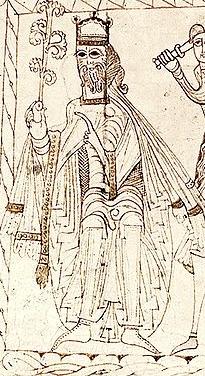
Alfonso VII, called the Emperor, became the King of Galicia in 1111 and King of León and Castile in 1126. Alfonso, born Alfonso Raimúndez, first used the title Emperor of All Spain, alongside his mother Urraca, once she vested him with the direct rule of Toledo in 1116. Alfonso later held another investiture in 1135 in a grand ceremony reasserting his claims to the imperial title. He was the son of Urraca of León and Raymond of Burgundy, the first of the House of Ivrea to rule in the Iberian Peninsula.
Alfonso VIII, called the Noble or the one of Las Navas, was King of Castile from 1158 to his death and King of Toledo. After having suffered a great defeat with his own army at Alarcos against the Almohads in 1195, he led the coalition of Christian princes and foreign crusaders who broke the power of the Almohads in the Battle of Las Navas de Tolosa in 1212, an event which marked the arrival of a tide of Christian supremacy on the Iberian Peninsula.

The Battle of Las Navas de Tolosa, known in Islamic history as the Battle of Al-Uqab, took place on 16 July 1212 and was an important turning point in the Reconquista and the medieval history of Spain. The Christian forces of King Alfonso VIII of Castile, were joined by the armies of his rivals, Sancho VII of Navarre and Peter II of Aragon, in battle against the Almohad Muslim rulers of the southern half of the Iberian Peninsula. The caliph al-Nasir led the Almohad army, made up of people from all over the Almohad Caliphate.
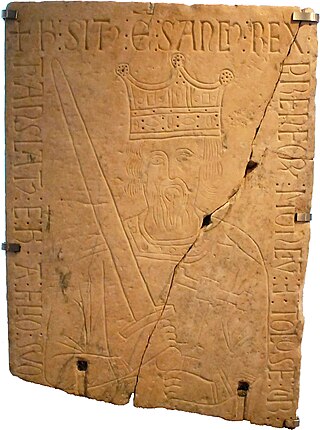
Sancho Garcés III, also known as Sancho the Great, was the King of Pamplona from 1004 until his death in 1035. He also ruled the County of Aragon and by marriage the counties of Castile, Álava and Monzón. He later added the counties of Sobrarbe (1015), Ribagorza (1018) and Cea (1030), and would intervene in the Kingdom of León, taking its eponymous capital city in 1034.

The Kingdom of Castile was a polity in the Iberian Peninsula during the Middle Ages. It traces its origins to the 9th-century County of Castile, as an eastern frontier lordship of the Kingdom of León. During the 10th century, the Castilian counts increased their autonomy, but it was not until 1065 that it was separated from the Kingdom of León and became a kingdom in its own right. Between 1072 and 1157, it was again united with León, and after 1230, the union became permanent.

The Order of Calatrava was one of the four Spanish military orders and the first military order founded in Castile, but the second to receive papal approval. The papal bull confirming the Order of Calatrava was given by Pope Alexander III on September 26, 1164. Most of the political and military power of the order had dissipated by the end of the 15th century, but the last dissolution of the order's property did not occur until 1838.
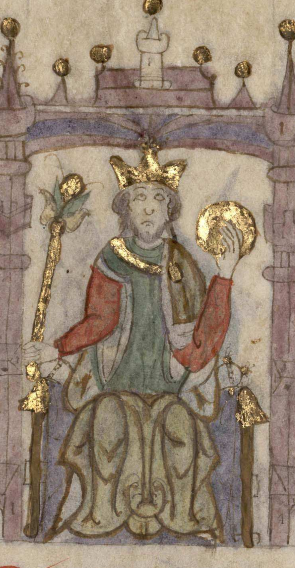
Sancho III, called the Desired, was King of Castile and Toledo for one year, from 1157 to 1158. He was the son of Alfonso VII of León and Castile and his wife Berengaria of Barcelona, and was succeeded by his son Alfonso VIII. His nickname was due to his position as the first child of his parents, born after eight years of childless marriage.
Fitero is a town and municipality located in the province and autonomous community of Navarre, northern Spain.

The Diocese of Tarazona is a Latin diocese of the Catholic Church located in north-eastern Spain, in the provinces of Zaragoza, Soria, Navarre and La Rioja, forming part of the autonomous communities of Aragón, Castile-Leon, Navarre and La Rioja. The diocese forms part of the ecclesiastical province of Zaragoza, and is thus suffragan to the Archdiocese of Zaragoza.

The Monastery of Fitero is a Cistercian monastery located at Fitero, Navarre, Spain, on the banks of the Alhama river.

Calatrava la Vieja is a medieval site and original nucleus of the Order of Calatrava. It is now part of the Archaeological Parks of the Community of Castile-La Mancha. Situated at Carrión de Calatrava, Calatrava during the High Middle Ages was the only important city in the Guadiana River valley. It thus guarded the roads to Cordova and Toledo.
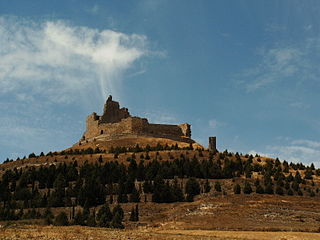
Nuño Pérez de Lara was a Castilian nobleman, politician and military leader. He began his career at the court of the Emperor Alfonso VII, during whose reign he took part in the repoblación of the Extremadura and the defence of the Almohad frontier. Between 1164 and 1169 he governed Castile as regent for the underage Alfonso VIII, and he continued to exercise semi-regal power in the kingdom until 1176. He founded two monasteries and fostered the cult of Thomas Becket in Spain. He died taking part in the conquest of Cuenca
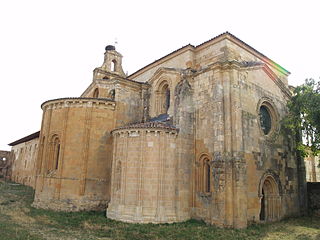
Ponce de Minerva was a nobleman, courtier, governor, and general serving, at different times, the kingdoms of León and Castile. Originally from Occitania, he came as a young man to León (1127), where he was raised probably in close connection to the royal family. His public career, first as a courtier and knight in the military retinue of Alfonso VII of León and Castile, began in 1140. By later historians he was implicated in the strife between Alfonso's successors, Sancho III of Castile and Ferdinand II of León, but he was generally loyal to the latter, although from 1168 to 1173 he was in voluntary exile serving Alfonso VIII of Castile.

Fortún Garcés Cajal was a Navarro-Aragonese nobleman and statesman, perhaps "the greatest noble of Alfonso the Battler's reign". He was very wealthy in both land and money, and could raise two to three hundred knights for his retinue, funded both out of his treasury and enfeoffed on his lands.

Agoncillo is a town and municipality in La Rioja province in northern Spain.
Monasteries in Spain have a rich artistic and cultural tradition, and serve as testament to Spain's religious history and political-military history, from the Visigothic Period to the Middle Ages. The monasteries played an important role in the recruitment conducted by Christian aristocracy during and after the progress of the Reconquista, with the consequent decline in the Muslim south of the peninsula.

Pedro de Atarés was a Spanish noble and member of the House of Aragón. He founded the Veruela Abbey, the oldest Cistercian monastery in Aragon.

The Battle of Martos was a minor battle of the Spanish Reconquista fought between Martos and Torredonjimeno in Andalusia in 1275. The battle was fought between the troops of the Kingdom of Granada and those of the Crown of Castile. The Castilian force was completely destroyed as a result of the battle. There is some confusion in the dates since different authors report different dates. Zurita, for example, reports that the events described here took place between May and August; the more modern authors, however, put them between September and October.


















